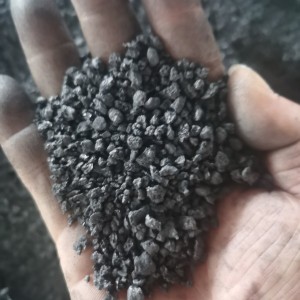High carbon and low sulfur Calcined pitch coke
Pitch coke is a low-sulfur, low-ash coke. It is a product obtained by direct coking of coal tar pitch in a coking oven, and it can also be produced by delayed coking, and the final coking temperature is above 1100°C. Calcined pitch coke is obtained by calcining pitch coke.
The coke obtained by coking coal tar pitch as raw material is called pitch coke. Soft asphalt, medium temperature asphalt or hard asphalt can be used as the raw material of pitch coke. As early as the 1950s, Angang used coke ovens to produce pitch coke.
The volatile content of hard asphalt is less than that of medium temperature asphalt, the former is 47-49% and the latter is 65-75%. The softening points of the two are 130-140°C and 65-75°C respectively. Therefore, the production of pitch coke in coke ovens with hard pitch has a better operating environment and less leakage than that of medium-temperature pitch.
Asphalt is injected into the coke oven carbonization chamber with a pump. The temperature of the coke oven flue is 1300°C. After the asphalt enters the carbonization chamber, the volatile matter is quickly discharged, so the coke oven pitch coke has large pores, long strip holes, and the coke body is shiny and hard.
In the past, Angang and Wuhan Iron and Steel used coke ovens to produce pitch coke, while Baosteel used delayed coking to produce pitch coke. The equipment and process were similar to those of delayed petroleum coke. Use soft coal tar pitch with a softening point of 30-40°C as the raw material, heat it to 500°C in a heating furnace, and then enter the coking tower to form coke. The volatile content of delayed pitch coke is the same as that of delayed coking oil coke, and the volatile content is very high. . Baosteel has a complete set of equipment for calcining delayed pitch coke in a rotary kiln, so what it supplies is calcined pitch coke.
Pitch coke, like petroleum coke, is less gray coke and is the main raw material in the carbon industry. When manufacturing graphite electrodes, 25% of pitch coke is generally added to petroleum coke to improve the compressive strength of graphite electrodes. However, under the same graphitization conditions, the degree of graphitization is slightly worse than that of petroleum coke. Therefore, when manufacturing ordinary power graphite electrodes, it is generally not added.










